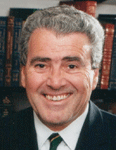Thomas J. Murray, OC, MD, FRCPC
 |
Professor Emeritus and former Dean of Medicine at
|
…on the history of MS treatments
“In 1868, Jean-Martin Charcot defined the clinical features and named the disorder we now know as multiple sclerosis (MS) – and speculation about cause and potential therapies began. Initially, the treatments applied to an MS patient were those used for any serious neurologic disease and included a list of drugs thought to be sedatives and others that were stimulants: foxglove, Indian tobacco, aconite, hemlock, coffee, musk, garlic, asafoeteda, valerian, castor, oil of amber, skunk cabbage, alcohol, ether, chloroform, opium, hops, deadly nightshade, henbane, Hoffman anodyne, and extract of hemp. Other prescriptions might be horseback riding, various herbs, moxibuxon, restricted diet, vigorous massage, draining wounds, hydrotherapy, and electrical stimulation.
“William Moxom, the first to publish cases of MS in the English literature (1870s) prescribed meat diet, bleeding, cooling with sponges, galvanic and faradic electrical stimulation, iron, strychnine, quinine, belladonna, calumbae, arsenic, nux vomica, silver nitrate, hyocynamide, atropine, and ergot. He concluded that the results were ‘most unsatisfactory’ and ‘no approach to cure has been made.’
“In the early 20th century, a lot of therapies applied to MS were those found to be helpful in syphilis, such as heavy doses of mercury, periods of time spent in a fever box, fever induction with vaccines, and injection of malaria parasites, all of which would make an MS patient feel worse. Although most neurologists concluded that nothing helped, they all tried some therapies in hopes that they may offer some benefit.
“Charcot in the 19th century and writers reviewing all remedies, such as Russell Brain (1930) and George Schumacher (1950), concluded that no therapy altered the outcome of the disease. This didn’t stop clinicians from trying an array of treatments, however, and in 1935 Brickner listed more than 150 therapies that had been used in MS.
“Anticoagulants were used after 1940 on the theory that vascular occlusion may be the cause, then antibiotics on the theory that infection was the cause. Other theories of cause led to therapies with low-fat diets and histamine desensitization (histamine is a substance produced by the body during an allergic response). This was followed by a long period of use of immunosuppressants, based on the belief that the problem was a disturbed immune system. Steroids were used for the inflammation in acute attacks, but it was evident that they did not alter the progression of MS. It was common to borrow therapies that worked in other disorders, such as rheumatic or autoimmune diseases, which shared immunologic and inflammatory theories.
“The first therapies demonstrated to convincingly alter the outcome of the disease came with the development of the disease-modifying therapies in the 1990’s, after their long development that began in the 1970’s. As we go forward, therapies will be designed to fit our changing theories, and similarly, better therapies will alter theory in order to explain the benefit. That is the nature of the scientific enterprise.”
Dr. T. Jock Murray founded the Dalhousie MS Research Unit in 1979 and co-founded the Consortium of MS Centers (CMSC), previously serving as president. He also founded the Canadian Network of MS Centers. Dr. Murray has authored or co-authored four books on MS, including Multiple Sclerosis: the history of a disease. He was made an Officer of the Order of Canada, the country’s highest civilian recognition.
